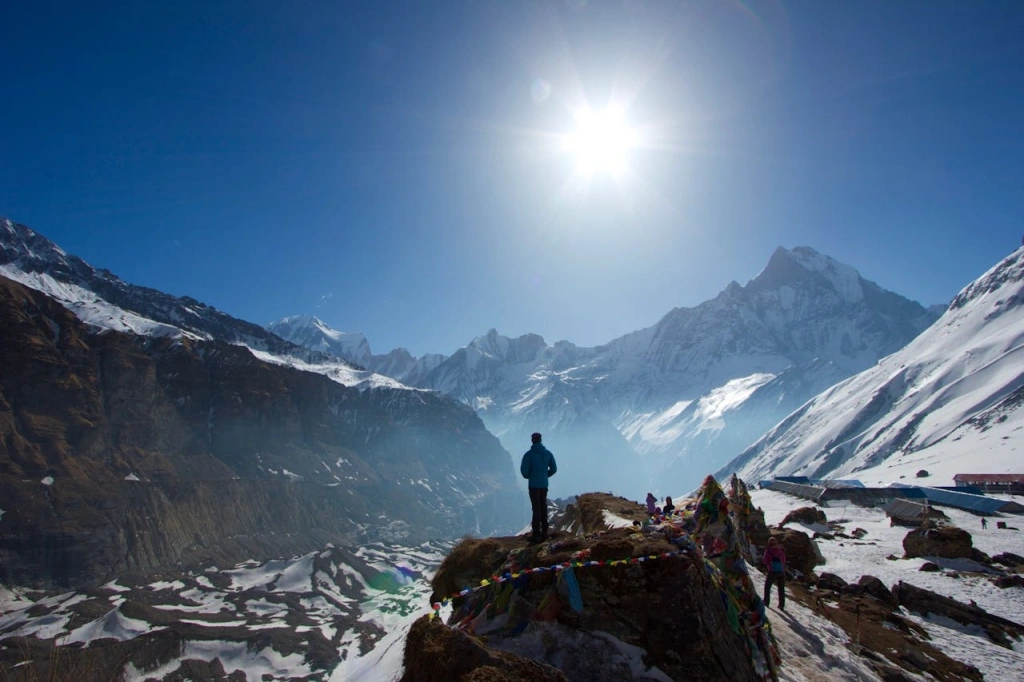You don’t have to be a world-class mountaineer to conquer some of the toughest mountains in the United States. In fact, there are several jaw-dropping peaks across America that seem impossible to climb—but are surprisingly within reach for experienced hikers, weekend warriors, and even adventure-seeking travelers. These are the kinds of summits that demand respect, preparation, and stamina—but reward you with views, pride, and the thrill of doing something few ever dare.
If you’re between 25 and 65, moderately fit, and up for a challenge, these nine peaks are calling your name. And yes, some of them will push your mental and physical limits. But they’re not just for elites or celebrities. With planning, training, and grit, you can absolutely reach these incredible summits—no technical ropes or guides required for most of them.
1. Mount Washington, New Hampshire
Known for its unpredictable weather, Mount Washington (6,288 ft) has winds recorded at over 230 mph. Still, thousands hike it each year via the Tuckerman Ravine Trail or Ammonoosuc Ravine Trail.
- Why it’s tough: Sudden storms, icy wind chills, steep vertical gains
- Why you can summit: Well-maintained trails and day-hiking accessibility
- Best for: Adventurers aged 30+ with strong cardio and some hiking experience
2. Longs Peak, Colorado
Standing at 14,259 feet, Longs Peak is one of Colorado’s most iconic 14ers. The Keyhole Route is non-technical but exposed, requiring mental focus.
- Why it’s tough: Altitude sickness risk, exposed ledges, long 15-mile day hike
- Why you can summit: No technical gear needed, just strong legs and early start
- Best for: Fit hikers in their 20s–40s looking for a summer alpine challenge
3. Mount Hood, Oregon
This active stratovolcano rises to 11,240 feet and looks like a climb for pros only. Yet, guided summit trips via the South Route make it accessible for adventurous climbers.
- Why it’s tough: Icy slopes, crevasse hazards, early morning alpine starts
- Why you can summit: Group climbs with guides make it surprisingly doable
- Good for: Ages 30–50 with moderate fitness and mental toughness
A 45-year-old outdoor entrepreneur who hikes regularly and earns ₹30 lakh annually may see this climb as a once-in-a-lifetime bucket list goal. Training smart could mean summiting without interrupting a demanding work schedule.
4. Mount Shasta, California
Shasta stands at 14,179 feet and is often blanketed in snow, even in summer. It’s steep, but popular non-technical summit routes attract first-timers.
- Why it’s tough: 7,000+ ft of elevation gain, snow travel, 12+ hour hike
- Why you can summit: Many outfitters offer beginner-friendly guided ascents
- Perfect for: People in their 30s and 40s training for their first major summit
5. Mount Whitney, California
At 14,505 ft, Whitney is the highest peak in the Lower 48. Permits are required, and the Mount Whitney Trail is 22 miles round-trip.
- Why it’s tough: Length, altitude, and unpredictable weather
- Why you can summit: It’s a well-worn trail with switchbacks and good signage
- Best for: Fit hikers aged 30–60 willing to acclimate beforehand
Climbing Whitney can also serve as a powerful family achievement. Parents in their 40s with kids aged 10–15 often train together for months and make this a bonding adventure that leaves long-lasting memories.
6. Mount Katahdin, Maine
Maine’s highest point at 5,269 ft is more about technical footwork than elevation. The Knife Edge Trail is narrow and exposed, requiring mental calm.
- Why it’s tough: Sharp drop-offs, rock scrambles, bad weather
- Why you can summit: No ropes needed, just nerves of steel
- Good for: People aged 25–45 who enjoy mental and physical tests
7. Grand Teton, Wyoming (Non-Technical Routes)
While Grand Teton (13,775 ft) is famous for alpine climbing, non-technical scrambles like the Owen-Spalding Route make the summit possible without ropes—if you’re up for it.
- Why it’s tough: Route-finding, exposure, and 7,000 ft vertical gain
- Why you can summit: Strong hikers with guide support can summit in 2 days
- Best for: Fit travelers and backpackers aged 30–55 with moderate experience
Even professionals in their late 30s with a net worth of ₹1 crore+ have made the Teton their vacation summit—choosing it over expensive overseas treks due to its beauty, challenge, and U.S. accessibility.
8. Mount Elbert, Colorado
Colorado’s highest peak (14,440 ft) may sound intimidating, but Mount Elbert is known as one of the most “beginner-friendly” 14ers.
- Why it’s tough: High elevation and thin air
- Why you can summit: No scrambling or exposure; just endurance
- Great for: First-timers aged 25–60 building up mountain confidence
9. Humphreys Peak, Arizona
This 12,637-foot summit is the highest in Arizona and offers surreal alpine views. The Humphreys Trail is steep but safe with steady incline through beautiful forest and rock.
- Why it’s tough: Weather shifts and steep final push
- Why you can summit: Well-marked trail, popular among locals
- Ideal for: Hikers of all levels looking to experience summit joy
Age, Energy, and Experience Matter
These mountains aren’t Everest, but they demand respect and preparation. Here’s what different age groups bring to the trail:
- 20s–30s: Natural endurance and faster recovery—great for long summit pushes
- 40s–50s: Mental stamina, planning skills, and strong risk management
- 60+: Wisdom, patience, and often surprising endurance when trained properly
Net Worth? Not As Relevant As You Think
Contrary to the myth that big climbs need big budgets, many of these summits can be attempted on modest weekend getaways. For instance:
- Mount Elbert, Whitney, or Humphreys can be tackled with a budget under ₹1 lakh, including gear and travel.
- For higher net worth individuals—say ₹2 crore+—guided experiences at Hood or Shasta can be premium yet affordable additions to an adventurous lifestyle.
Final Thoughts
These nine mountains might look fierce, but they’re shockingly climbable with the right mindset, gear, and respect for nature. Whether you’re chasing your first summit or planning your next challenge, these American giants promise more than just elevation—they deliver transformation.








